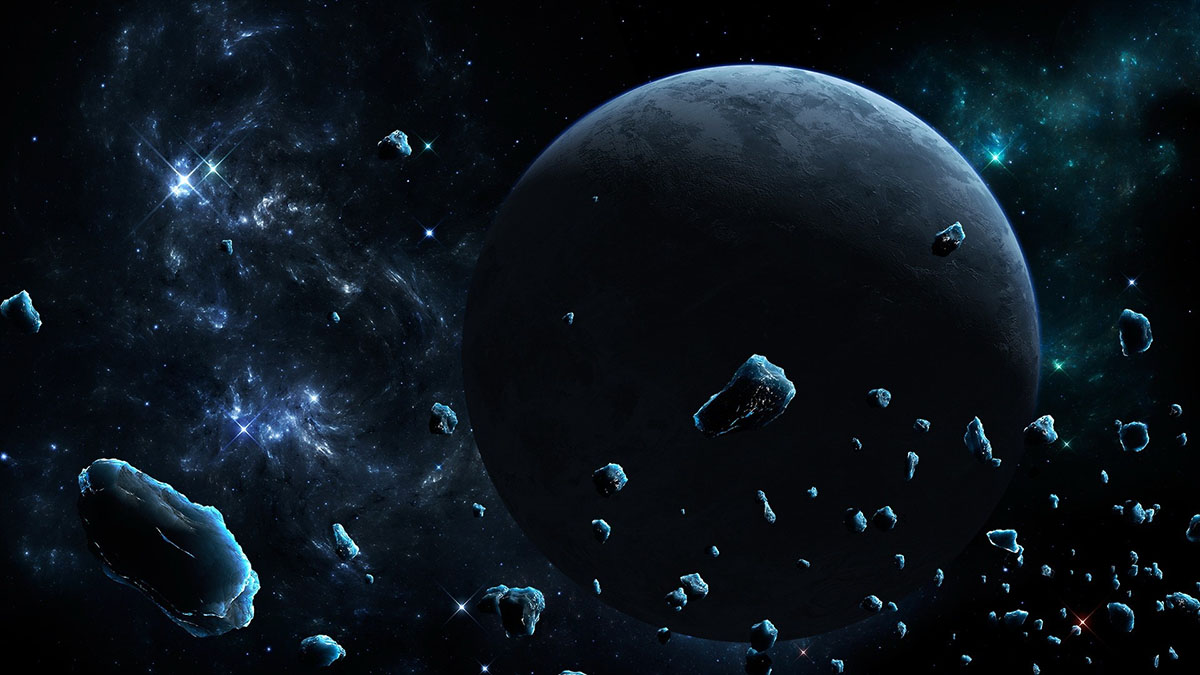why the hunt for planet nine is still underway

Astronomers have been looking for a ninth planet — by the newer definition of the word — for a few years now and so far, with little luck. If it does exist, it would be an oddball largely made of gas and ice on a bizarre, skewed elliptical orbit around the sun lasting for up to 20,000 years, traveling as far as 179 billion kilometers away. Our only evidence for its potential existence is the motion of several objects in extremely eccentric orbits beyond Neptune. Their configuration only seems to add up if there’s a mass of ten Earths periodically pulling on them, and a planet would be the most likely explanation for so much mass in one place, an idea often resurrected to account for odd behaviors of distant objects in the outer reaches of our solar system.
But a new paper claims that Trans-Neptunian Objects, or TNOs, can arrange themselves into disks and their combined mass could have a very similar effect. They would form the same way as a planet, coalescing around heavier bodies, but lacking the force to fuse into a single object and ending up as a clump of rocks and ice in each others’ orbit. Of course, there are some major caveats highlighted by the authors. They’re not sure if there’s enough mass in the region in question to organize itself into such a disk and the disk in question would need to have a very eccentric orbit while maintaining a large but stable configuration, something we can see in other types of stellar objects but which we haven’t seen in small rocky bodies before.
is planet nine still out there?
Despite what you may have seen, this proposal doesn’t mean that Planet Nine is no longer a search target because it’s still a perfectly valid explanation for the orbital paths of the objects which hint at the existence of something weird in our solar system. As noted, we’ve been hunting for something like it since the 1880s, when astronomers proposed an undiscovered planet to explain strange things they saw past Neptune’s orbit. Percival Lowell estimated it to be roughly seven Earth masses, and much of the excitement around the discovery of Pluto was due to the initial thought that it was indeed the massive planet that explained all that strange motion of TNOs.
But since Pluto proved to be a planetary dwarf instead of a small gas giant similar to Neptune, we’re still left with the same set of questions to answer and Planet Nine could still easily do the job with fewer uncertainties than a loose confederation of small TNOs. The problem is that it’s just very hard to find because it’s dark, far away, and moves so slowly against the background of stars as far as our viewpoint is concerned. But how difficult could it possibly be to find if it’s right here in our solar system, you might ask, especially when we’re able to track down large moons around worlds orbiting alien stars? Wouldn’t looking inside our own system be easier?
Seemingly paradoxically, it’s actually harder. Imagine being in a large house at night, able to see other houses with all their lights on out of your windows. You can see what goes on inside those neighboring houses by looking into their windows and tracking shadows as well as anything you can resolve in better detail. But inside the house where you are, you can only see the room you’re in and whatever is down the hall. Your view is constantly limited because you can’t see the whole house at once, potentially missing what’s happening behind a wall or when you’re just not looking in the right direction. That’s a bit like trying to find a missing planet in our solar system and why it’s easier to spot a Hot Jupiter hundreds of light years away than an icy world to which we could send a probe.
where do planet hunters go from here?
Space exploration is an endeavor that requires you to be able to walk and chew gum at the same time, so investigating multiple hypotheses for the motion of certain TNOs is more or less the standard operating procedure. Planet Nine still makes sense, even though yes, disks of small TNOs disrupting orbits in the far reaches of the solar system are also possible. We’ve been trying to solve this mystery for almost two centuries now, and discovered some really interesting things about the outer solar system, the strange worlds lurking there in the process, and the fact that not only are they far from static ice balls surrounded by leftovers of planetary formation, they’re home to some bizarre and exotic chemistry we’re just starting to understand.
With that in mind, the hunt for a gas giant beyond Neptune is actually a testament to the tenacity of astronomers and their commitment to not just solve the mystery, but make sure it’s solved correctly. If there’s a gas giant behind it, so be it. If clumps of TNOs collect are throwing their combined weight around and sending distant space rocks into wild elliptic orbits, great. And while pop sci publications might take shortcuts, announcing things as decided or settled at the drop of a hat, scientists don’t. This is why the hunt for Planet Nine is far from over. If anything, it just got a little more interesting.





